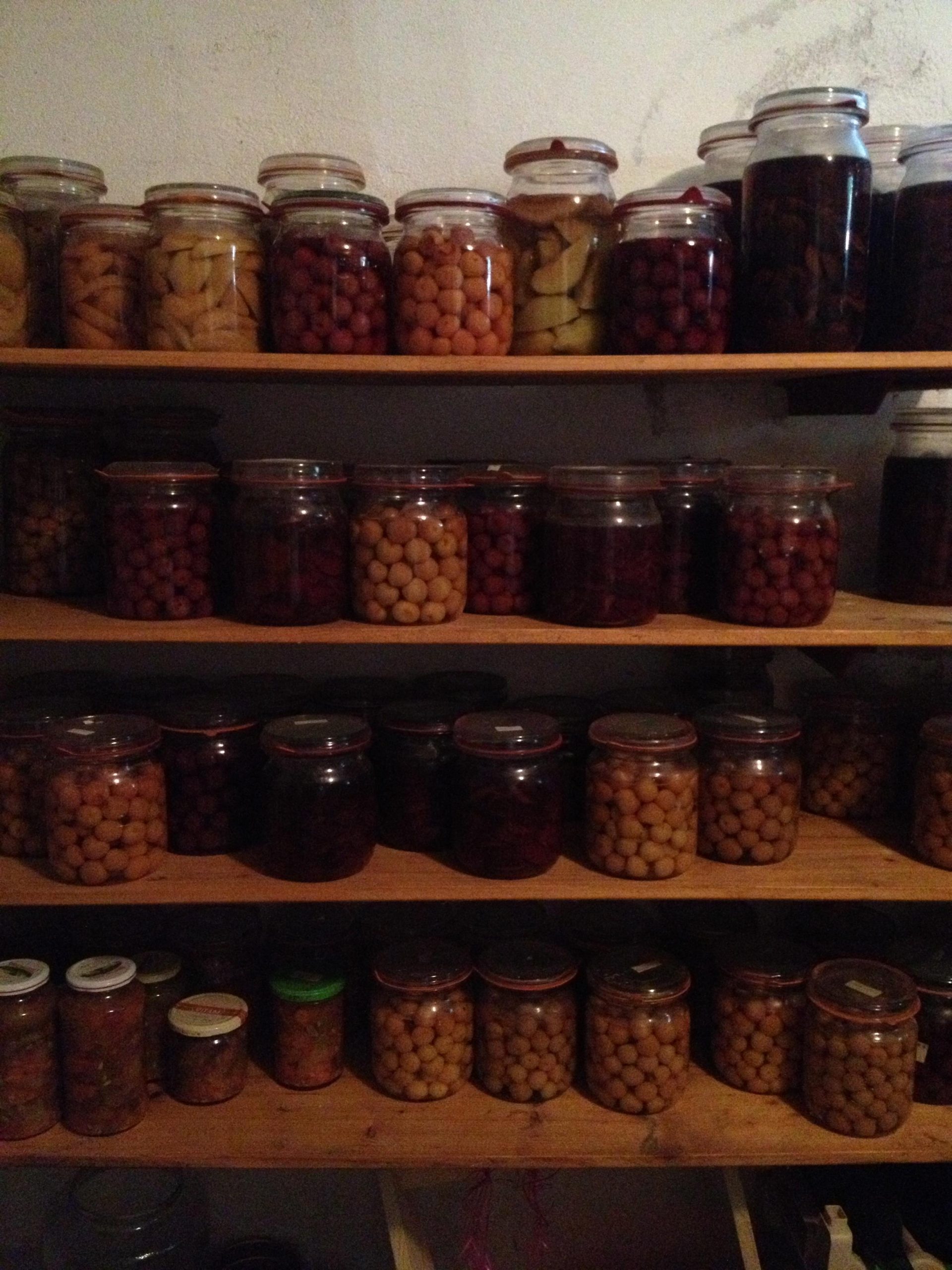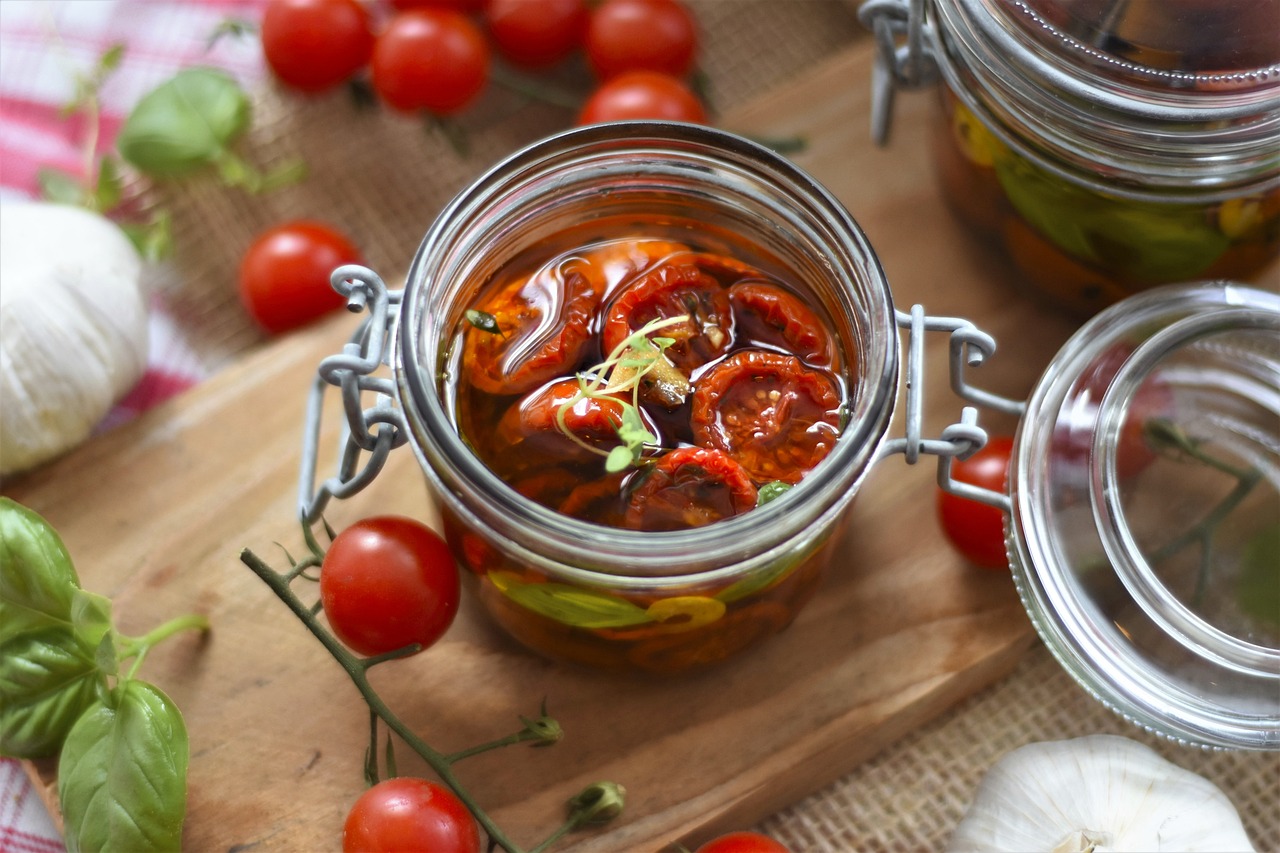5 Easy Ways To Preserve Food Without Electricity

I am not an “expert” in food storage, but I AM married to a man who grew up in the Northwest Territories and lived off the land. Due to their isolation, there was no “new” food brought in after the last barge at the end of summer, and before the first barge in May/June. He grew up without refrigeration in his early years. This is what I learned from Ken and his stories.
One story he tells if of coming upon a solitary man travelling by canoe camped on the banks of the Mackenzie River. It was considered proper northern etiquette to check up on whomever you met on the river in case they needed help. His dad was a game warden working for the government. They stopped and passed the time of day with the traveller. Ken’s dad asked if he needed anything. Ken could see why he asked him, because the man was from Norway and had nothing for food except a large block of cheese and dry bread. From his dad’s point of view this man was starving! This traveller insisted he was just fine and expressed appreciation for the offer, but he declined it. Ken learned something from that experience.
I asked Ken…. how could he keep cheese without refrigeration? Before I answer how this traveller fared, let’s talk about how to store food without a fridge or freezer. After all, people of the north have been faced with doing just that for centuries.
Ken said it is very simple, there are only three ways to store food for any length of time. There are a couple for short periods, but to store for a winter, only three:
1. Freezing
This of course is easy to do up north, the whole outdoors is your freezer in winter. You just have to keep it safe from wildlife. I saw a documentary once about a loner in the wilderness who built a pantry up high in the trees and a ladder to get up to it. This kept it safe from the wildlife, and he was well fed all winter!
Freezer Facts – Learn Facts, Tips and Tricks About Freezing Your Food
https://pioneerthinking.com/italian-jams-and-conserves
2. Canning
If you don’t have electricity, this is possible on a wood stove, though it would be a lengthy (yet effective) process. You can process anything: meat, vegetables, stews, fruit, fish and dessert like carrot pudding. Here are some canning tips:
- The jars and lids must be sterilized first, by boiling for a few minutes.
- Then add what you want to can, add boiled water, and some seasonings.
- Leave at least 1/4 inch space at the top.
- Tighten the lid, then loosen a quarter turn. This will allow room for the air to leave.
- Submerse in water and boil for the required amount of time.
- Word of caution, beans take 3-4 hours.
- A high pressure canner is ideal, it cuts the time by at least half.
- Take out, tighten the lids and let cool completely.
- Ensure that all jars have sealed – the lids will be concave.
[Editor’s Note: If you’ve never canned food before, it’s a good idea to get a solid book on canning and preserving and use the recipes there – or locate someone who is experienced. It’s not difficult, but there are some things you need to know as you go through the process. There’s no teacher like experience!]
3. Dehydrating
Almost everything can be dehydrated (dried), plain and simple. The First Nations people up north dry their meat and fish by hanging it, and smoke it to keep the bugs off. The meat will last for the remainder of the warm months and all winter. They usually ate it as is, dried. But I would venture to guess you could rehydrate it with water if you wanted to… hmmmm, now there is an experiment. You can purchase dried fruit, mushrooms, vegetables, and hydrate them, so why not meat?
Up north they used a teepee for smoking (and still do in many cases) – there were racks built between the teepee poles and the fish hung from there. A fire below was kept smouldering all day long. It varies on how long it takes. For example, if it was raining and damp, it would take longer, but other than that, it could be done in one day.
Once the food was dried, the meat and fish were just wrapped together, tied with a string and stored in a warehouse.
Wherever you are going to store your dried food, you must consider two things:
- You must keep them free from insects; and
- Be sure they have plenty of air.
Because as soon as you seal the product, it will very likely go bad.
When we were first married, I purchased a dehydrator and tried drying fruit for a few seasons, like apples, bananas & berries. I have a great granola recipe where after baking the oats with nuts, honey and coconut, I add dried fruit. You could also use your oven. You can have a wood oven and a wood dehydrator – as these would run without power.
Now there are other methods to help keep food, but this is for shorter periods of time.
4. Salt Preserved
Around the world, meat is preserved with salt, thus the birth of sausage. But sausage does not last long without cooling.
5. Vacuum Packed
Canning is basically vacuum packing in sterile environment, that is why it works so well. I looked to see if you can vacuum seal without electricity and found this:
I have purchased cheese in large blocks, cut them into smaller chunks and by vacuum sealing each piece, they lasted for months in the fridge. So without electricity, they would still last quite awhile just by keeping them in a cool place.
The Wrap Up
One more story: Ken and his dad made a trip in the heat of the summer, by canoe taking only a hind leg of caribou meat along with fixings for bannock and tea. To keep the meat fresh for the 10-day trip, they wrapped it tightly in a canvas bag and sunk it to the deepest part of the lake every night. The cold water preserved it for that trip.
� Now for the Norwegian traveller I mentioned at the beginning, his cheese lasted the trip because it was dried.
� And for the record, I think I would get a propane powered fridge, we had one in our camper, then you have the convenience even WITHOUT electricity!
The Author:
Elvie Look – I live in northern Canada with my amazing husband of 30 years. We work together from home in our own home business. When I am not working (which I love so much I do not consider it work), I am sewing or quilting.
Source: EzineArticles.com









How does the ‘The Wrap Up’ procedure work exactly. Does it preserve fruits, veggies, and meat?